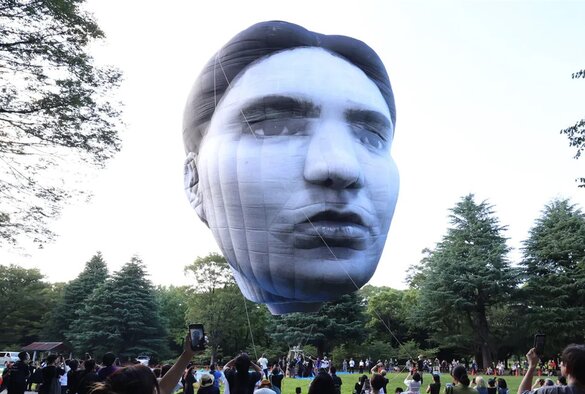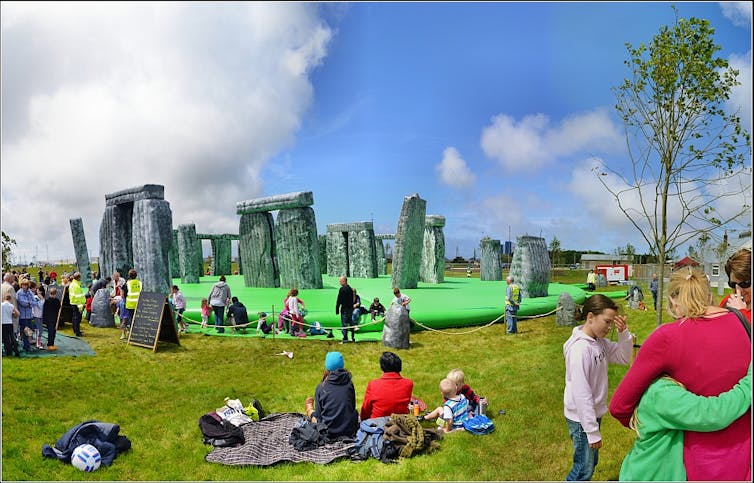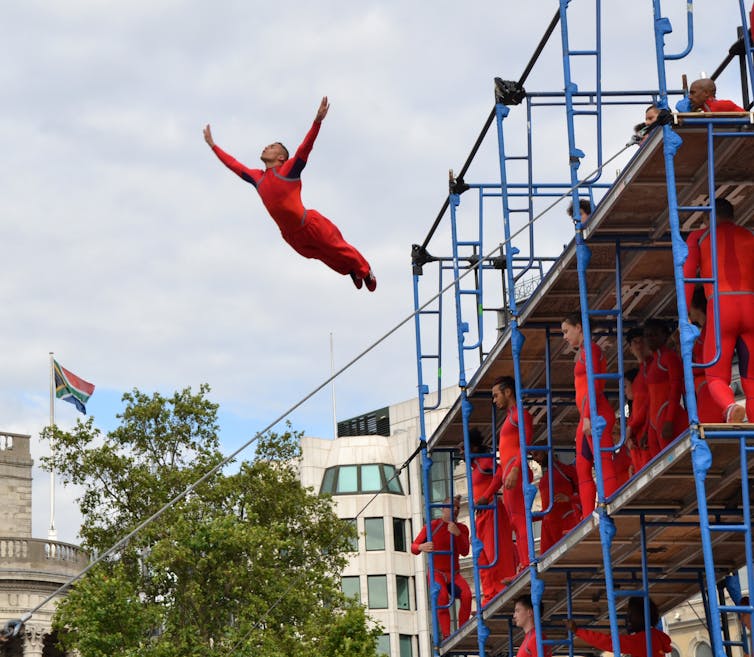
Dr Beatriz Garcia is Director of the University of Liverpool's Cities of Culture Research Observatory
In the days before the Tokyo 2020 opening ceremony, a giant head emerged, floating over the city. Entitled Masayume (which means "a dream come true" in Japanese), this oversized balloon by artist collective Me ("eyes"), was part of the Tokyo Tokyo Festival, as an arts response to the Olympic Games.
Art has long accompanied the arrival of the Olympics in a city. Budgets might vary, but the Games are the largest event out there. Local organisations and the Olympic Organising Committee (IOC) both seek to capitalise on the attention the Games garner by generating extracurricular cultural moments that echo the athletic accomplishments in the stadiums.
From Leni Riefenstahl's film, Olympia, at the Berlin 1936 Games to Speed Skater, Andy Warhol's print for Sarajevo 1984, artists have contributed to modern Olympic narratives in iconic ways. The purpose of these interventions, not to mention their desired audience, has varied considerably.
Controversy and political statement
Between 1912 and 1948, official Olympic art competitions accompanied the Games. Artists, sculptors and architects competed for gold, silver and bronze medals, with winning entries including designs for stadiums and future official Olympic medals.
The most influential artistic intervention from this period, however, was delivered out of competition. With Olympia Riefenstahl shaped the narrative of the 1936 Berlin Games and made a lasting mark on film-making worldwide. Debate continues on whether the film is a piece of Nazi propaganda or a universal celebration of sport aesthetics.
The Mexico 1968 Games also resulted in multiple lasting narratives, infused with the political upheavals of the era. The fabled black power salute photograph - featuring American athletes Tommie Smith and John Carlos, each raising a black-gloved fist during the US national anthem on the Olympic podium - is doubtless the enduring legacy of that edition.
Those Olympics left other lasting traces. In a bid to visually integrate sculpture and architecture with the Olympic Village, architect Pedro Ramírez Vázquez, the chairman of the Olympic Games organising committee, and artist Mathias Goeritz conceived of the Route of Friendship.

A meander of 19 monumental sculptures (by international artists including Alexander Calder) installed along southern Mexico City's Beltway, it was a first for government-sponsored public art in Mexico, being both abstract and fully integrated into urban planning.
The official cultural programme of the Mexico 1968 Games is seen as the most ambitious in history. It positioned the nation as a world-leading art and culture hub, from graphic design and advertising to the performing and visual arts. And it set the example for how the Games could showcase culture, not just as heritage, but of equal contemporary value as the Olympic sports themselves.
Host star
At the Barcelona 1992 Summer Games, the host city became the star, the athletes' equal. The public art programme effectively rebranded Barcelona as the culture tourist hub we know today. There was art on the street (by luminaries including Elsworth Kelly and Antoni Tapiès) and on rediscovered beaches (Rebecca Horn), with an indelible logo riffing on Joan Miró's paintings, the city's most famous son.

By the time the London 2012 Games came round, expectations of what Olympic art programmes could do for a country had grown exponentially. The ambitious Cultural Olympiad saw events and exhibitions nationwide bring art to unusual spaces, with young people at the helm.
There was the One Extraordinary Day dance extravaganza, wherein aerial performers battled gravity on London's signature structures, from the Millennium Bridge to the London Eye. And the eye-catching responses to heritage locations, from Jeremy Deller's inflatable Stonehenge to interactive light displays at Hadrian's Wall.
British sculptor Anish Kapoor's Acerolmittal Orbit tower, meanwhile, remains London 2012's most visible and most controversial symbol.
The value of these interventions have been discussed in an extensive evaluation programme - the first time that the impact of art and culture at an Olympics Games has been documented in such detail.

The future
Tokyo 2020's official cultural programme, the Nippon Festival, has not been as visible and meaningful to international audiences as the organising committee might have liked. The local authority and arts council have, however, been savvy in positioning the Tokyo Tokyo Festival as a fullblown artworld event. Of 2,436 public proposals, 13 large-scale artworks were commissioned, including that giant inflatable and a robotic Zen garden.
Further, the IOC has, for the first time, presented its own take on how culture meets sport with the inaugural Olympic Agora. The purpose of this new space has been to present public art commissions – including a permanent installation, entitled The Audience by French artist Xavier Veilhan – and major exhibitions that tell the story of the Games and the Olympic Movement.

The Agora, thus, represents a position statement for the IOC rather than the host city. It remains to be seen whether Veilhan's piece will gain credibility as an Olympic art landmark, whether it can impress savvy art audiences or tell future tourists enough about Tokyo as an Olympic city. For residents and Olympic fans alike, however, it will surely become a symbol of what it took to host these historic Games in the middle of a pandemic.

This article is republished from The Conversation under a Creative Commons license. Read the original article.






